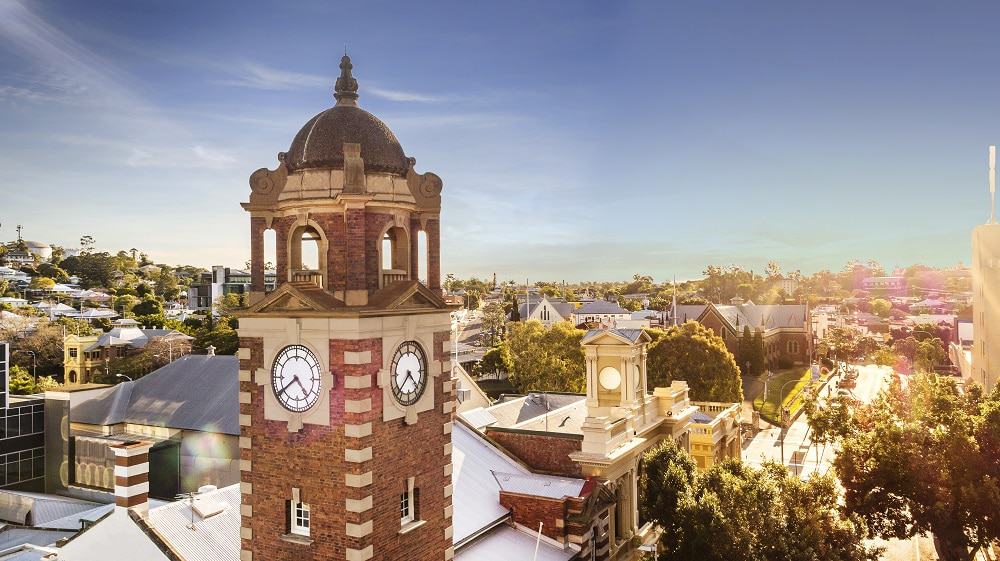Ipswich, the oldest provincial city in Queensland, has a history going back before the proclamation of the Colony of Queensland on 10 December 1859.
“The first meeting of electors shall be held at noon, at the Court House, at Ipswich on Thursday, the Twelfth day of April, in the year One Thousand Eight Hundred and Sixty,” it was reported in the Queensland Government Gazette.
Since then, things around the council offices have changed somewhat. Ipswich First dug up some Ipswich City Council artefacts that have been retained, some since council’s inception.
Queen Elizabeth, the Queen Mother, with Ipswich Mayor, James Finimore on 19 February 1958.
Source: Picture Ipswich
IPSWICH CITY COUNCIL VISITORS BOOK
It also contains a record of events such as a Civic Reception for Representatives of Bands from the Australian Band Championships Contest held in Ipswich, Easter 1952.
Of note are two pages in the book, the first dated 14 January 1958 which contains the signature of Sir Allen Brown who was the Commonwealth Royal Tour Director from the Prime Minister’s Department in Canberra. On the following page is the signature of the Queen Mother who visited Ipswich in 1958.
IPSWICH MUNICIPAL COUNCIL BALLOT BOX
On 3 March 1860 Ipswich was proclaimed a Municipality with the boundaries of the municipality being proclaimed on 16 March 1860. Elections to nominate and select the first Aldermen of the Ipswich Municipal Council were held on 12 April 1860 with the first Mayor, Alderman John Murphy being elected at the first meeting of the Council.
On 1 December 1904 Ipswich was proclaimed a City, the Mayor at this time being Alderman Hugh Reilly. The proclamation was gazetted on 3 December 1904.
Australia was the first country to have secret ballots and by the end of the 1850s, most Australian colonies used the secret ballot for their elections. The secret ballot was only introduced in Great Britain in 1872 and the US by 1896.
The ballot box symbolizes the central importance of voting in Australian political culture and history.
Wooden ballot boxes were phased out in favour of metal ones sometime before the 1970s, then plastic was experimented with before the electoral authorities moved onto cardboard in the mid 1980s.
VICTORIAN CAST IRON / BRASS RUBBER STAMP CAROUSEL

